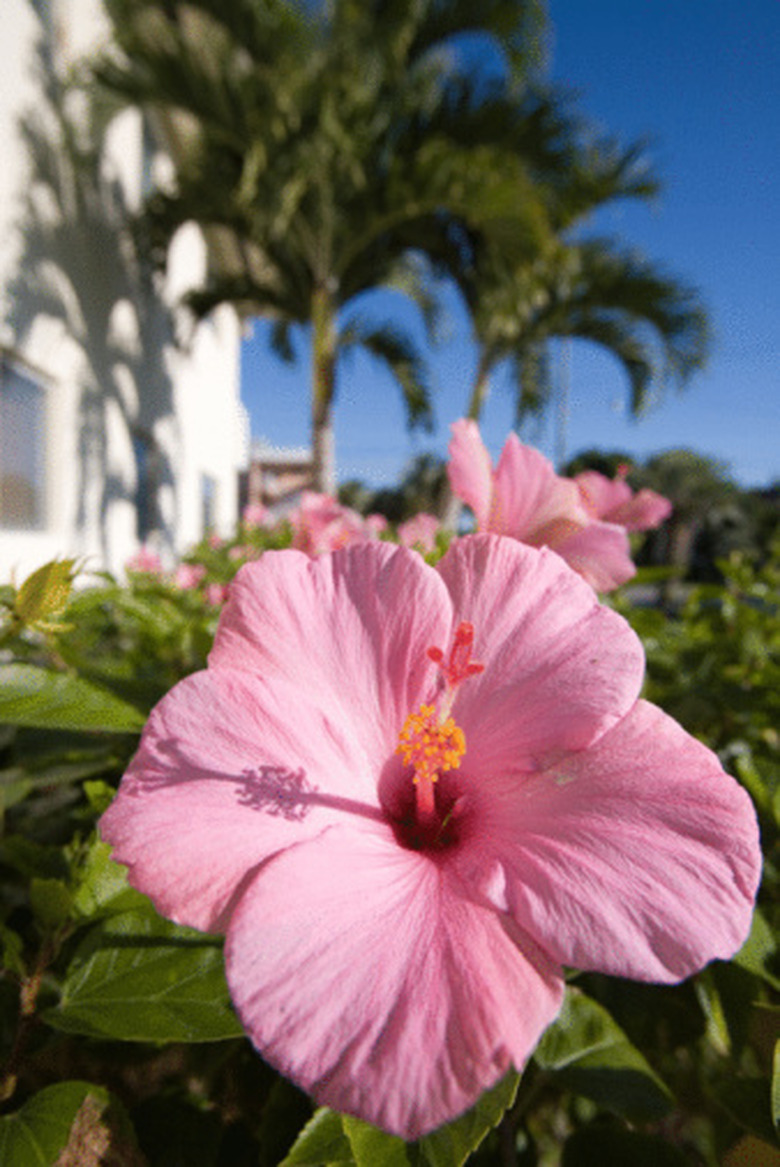What Is Eating My Hibiscus?
The genus of hibiscus includes a wide range of flowering plants with variations in the characteristics of flowers, leaves and pests that love to eat them. The Chinese hibiscus, Hibiscus rosa-sinensis L., is a plant that springs from the tropics and thrives only in warm locales.
The genus of hibiscus includes a wide range of flowering plants with variations in the characteristics of flowers, leaves and pests that love to eat them. The Chinese hibiscus, Hibiscus rosa-sinensis L., is a plant that springs from the tropics and thrives only in warm locales. It can grow in northern climates during the summer months but must be moved indoors as fall approaches.
Pest Types
A number of pests love to chew on the leaves, flowers and buds of a hibiscus, sucking away the plant juice. According to the University of Florida Institute of Food and Agricultural Sciences, these insects include caterpillars, grasshoppers, snails and slugs, beetles, cutworms, leaf miners, scale, mealybugs, spider mites, aphids, whiteflies and thrips. When large populations are allowed to infest the hibiscus, control can be problematic. (Ref 1)
- The genus of hibiscus includes a wide range of flowering plants with variations in the characteristics of flowers, leaves and pests that love to eat them.
Pink Hibiscus Mealybug
The pink hibiscus mealybug, Maconellicoccus hirsute, first appeared on hibiscus plants in south Florida in 2002, having previously been considered a serious pest of hibiscus only in Africa, Australia and Asia. The insect attacks a variety of other plants aside from the hibiscus by depositing orange eggs — that later turn pink before hatching — on the leaves of a plant. Living about 30 days, the pink hibiscus mealybug produces as many as 15 generations annually.
Mealybug Damage
Mealybug eggs can overwinter in bark cracks, leaves and even fruit clusters. While feeding on leaves, they emit a toxic saliva that causes the leaves to curl and disfigure. The entire plant can be damaged with buds refusing to bloom and stems twisting. The mealybug also excretes a honeydew that results in the development of black, sooty mold. In cases of extreme infestation, the hibiscus faces fatality.
- The pink hibiscus mealybug, Maconellicoccus hirsute, first appeared on hibiscus plants in south Florida in 2002, having previously been considered a serious pest of hibiscus only in Africa, Australia and Asia.
- The insect attacks a variety of other plants aside from the hibiscus by depositing orange eggs — that later turn pink before hatching — on the leaves of a plant.
Bug Control
The ladybug, Cryptolaemus montrouzieri, feeds on mealybugs and may be able to offer some natural control against the pink hibiscus mealybug. Pests that eat hibiscus are generally more of a problem when poor air circulation is present, so be sure to allow for proper spacing of plants. A variety of pesticides can work against the multitude of pests that afflict a hibiscus, but the plant is sensitive to excessive applications of regulatory chemicals.
